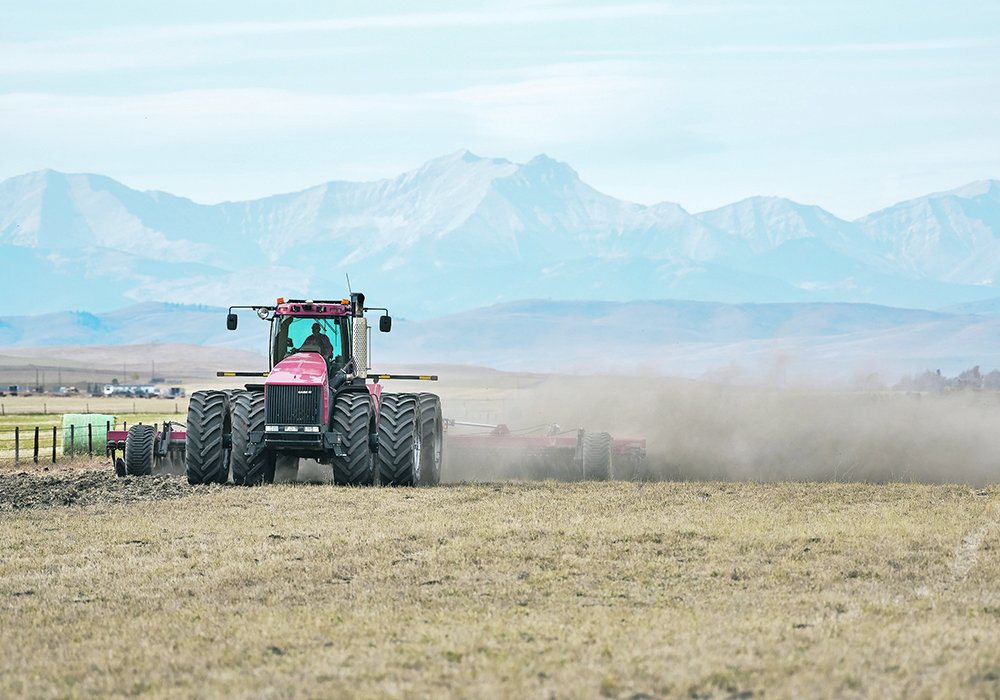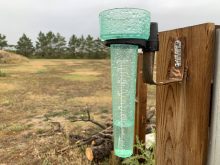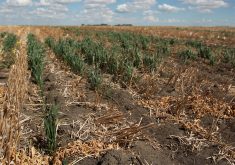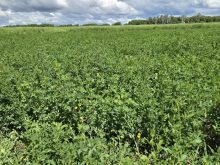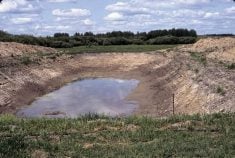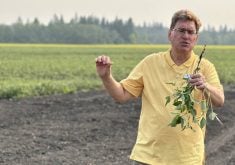Dry winter conditions that persisted into spring have many producers in southern Alberta wondering what the future holds, says a farm leader.
“The old saying is ‘plant in the dust and your grain bins will bust’,” said Lynn Jacobson, president of the Alberta Federation of Agriculture.
“Lots of times towards the end of May, we can pick up some rain… but this weather pattern seems to be completely different and maybe following more to what it did last year.”
Record-breaking heat waves and drought last summer that continued into the fall were followed by a largely dry winter and spring in southern Alberta, he said during an interview May 6. Parts of the region have experienced soil erosion due to persistent winds, further drying out the land.
Read Also

Using artificial intelligence in agriculture starts with the right data
Good data is critical as the agriculture sector increasingly adopts new AI technology to drive efficiency, sustainability and trust across all levels of the value chain.
It has been particularly noticeable in areas where producers started work early on their farms in expectation of rain that didn’t arrive.
“You could pretty well look around any area and you could see dust in the air.”
About half of southern Alberta south of the Trans-Canada Highway experienced 25-year lows in accumulated precipitation from Feb. 16, 2021, to Feb. 15, 2022, said Ralph Wright of Alberta Agriculture, Forestry and Rural Economic Development during an earlier interview.
There were also 50-year lows along the Milk River Ridge near the Montana border, he said.
“I would say areas from Red Deer south are in a moisture deficit and they will benefit greatly from at least near-normal or above-average (precipitation).”
Spring snowstorms in Calgary deposited 22 centimetres on April 19, more than the city experienced during the entire month of March, followed by a further 13 cm on April 22. Although both days set new records, accumulations further south at Jacobson’s farm near Enchant, Alta., northwest of Taber were almost non-existent, he said.
“A typical year would see us probably picking up moisture in February, March and even April, but that didn’t happen this year. Now we’re into May and seeding has started.”
The large snowfall was mostly isolated to the Calgary area, said John Pomeroy, Canada Research Chair in Water Resources and Climate Change at the University of Saskatchewan. There was generally a minimal snowpack during the winter on the Prairies from about the Red Deer River south to the United States border, resulting in persistently dry conditions for producers, he said.
“And it’s quite severe south of Calgary, so that’s going to be really problematic for the dryland farmers. I think in many cases, they don’t have enough moisture in the soils there even to guarantee successful germination of the seeds in practice.”
There needs to be least 100 millimetres of total rain to turn things around, said Pomeroy.
“I say to really pull it off and get some deep soil moisture, getting up to 150 mm to 200 would be needed.”
There was nothing as of May 4 to indicate that will happen, he said.
“Unfortunately, when you get into a drought, they tend to persist. That said, Manitoba was in a severe drought last year and it flipped over to extremely wet conditions, so it can happen, but there’s nothing on the horizon so far.”
Rain forecast for Manitoba has added to fears flooding will worsen in that province. However, Jacobson hoped such weather systems could potentially bring beneficial rain to southern Alberta.
In the meantime, he said conditions in parts of Alberta north of Calgary tend to be wetter, with one AFA board member in the Camrose area recently stating they didn’t want to see any more rain so they could start seeding.
“I guess you could say it’s a mixed bag for everybody in this province this year, some, like our area, extremely dry, and other areas, more than adequate moisture.”
Irrigated farmers in southern Alberta have already started their systems due to the dry conditions, he said.
It comes as levels in storage reservoirs in the Oldman River basin have been below average for this time of year, said Paul Elser, director of southern operations for Alberta Environment and Parks.
They were affected by last year’s high demand combined with below-normal precipitation at lower altitudes, he said.
Such conditions were reflected in river levels in the Milk, Oldman, Bow, and Red Deer river basins, which were generally below normal to normal for this time of year, said an email from Alberta Environment and Parks.
However, Elser expects reservoirs to fill based on healthy snowpacks in much of the Eastern Slopes of Alberta’s Rocky Mountains. They ranged as of April 1 from average to slightly above average for the Oldman River basin to much above average for the Bow and Red Deer River basins, said the email.
Pomeroy said some snowpacks were as deep as six metres, with model results showing about 1,000 millimetres water equivalent at high elevations over much of the Rockies.
“So, we’re very fortunate to have the deep snow this year, and that will end the hydrological drought that was developing last fall and summer, so that’s good news.
“But it’s only good news for those farmers who are able to use the water for irrigation.”


